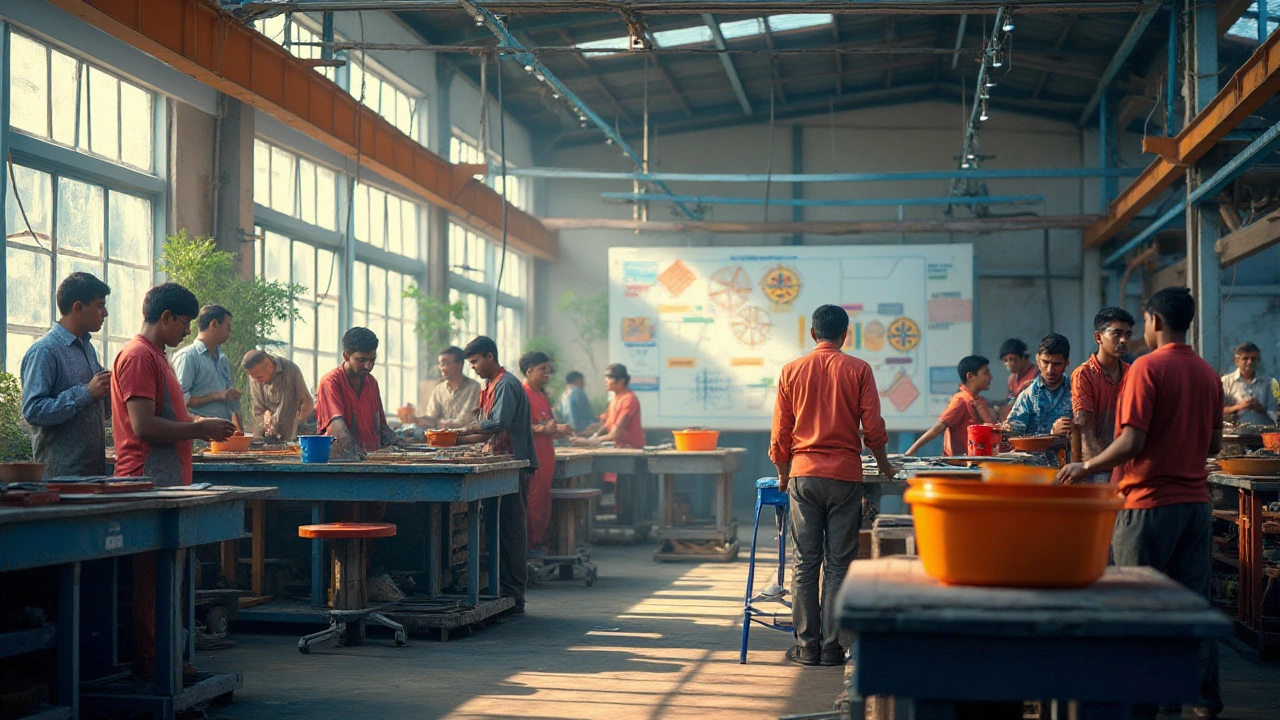Waste Reduction in Indian Manufacturing: Simple Steps to Cut Costs
If you run a factory in India, you know that every extra kilogram of waste means higher bills, lower profits, and a bigger carbon footprint. The good news? Reducing waste doesn’t require massive overhauls or fancy tech – just smart habits that anyone can start today.
First, look at your raw material handling. Too much over‑ordering or sloppy storage leads to spoilage, especially in food processing and textile units. Set a minimum‑order threshold based on past consumption data and train staff to rotate stock properly. A quick weekly check can stop hundreds of kilograms of waste from piling up.
Lean Production Practices That Pay Off
Lean manufacturing isn’t just a buzzword; it’s a proven way to trim waste. Map out every step of your production line and ask: does this step add value for the customer? If the answer is no, it’s a candidate for removal or automation. For example, pharma makers in Baddi and Hyderabad often waste solvents during cleaning cycles. Switching to closed‑loop cleaning systems recovers up to 80% of those solvents, slashing both waste and purchase costs.
Another lean tool is the 5S method – Sort, Set in order, Shine, Standardize, Sustain. A tidy floor means less time searching for tools, fewer mistakes, and lower scrap rates. Implement 5S in a pilot area, track the reduction in defective parts, and roll it out plant‑wide.
Turning Waste Into Value
Not all waste has to disappear. Look for ways to repurpose by‑products. In the textile industry, off‑cuts can become stuffing for furniture or insulation material. Furniture manufacturers in India are already selling “scrap‑fabric” pieces to local artisans, creating a new revenue stream while reducing landfill waste.
Similarly, food processing units can feed organic waste to biogas plants or sell it as animal feed. The generated biogas can power your own boilers, cutting energy bills and carbon emissions in one swoop.
Don’t forget about energy waste. Older machines often run inefficiently, burning extra electricity. Conduct an energy audit and replace outdated motors with high‑efficiency models. Even a 10% improvement in motor efficiency can save thousands of rupees annually.
Finally, involve every employee in the waste‑reduction mission. Simple ideas like fixing leaks, turning off idle machines, or using reusable containers can add up quickly. Reward teams that hit waste‑reduction targets – a small bonus or recognition can keep the momentum going.
By tightening material control, adopting lean practices, finding new uses for by‑products, and boosting energy efficiency, Indian manufacturers can cut waste, lower costs, and stay competitive. Start with one small change today, track the savings, and build on that success. The result? A cleaner factory floor, a healthier bottom line, and a stronger reputation for sustainability.
Understanding the 7 Wastes in Lean Manufacturing for Startup Success
In manufacturing, waste reduction is key to success. This article explores the seven types of waste identified in lean manufacturing: overproduction, waiting, transport, excess inventory, motion, defects, and over-processing. By understanding these wastes, startups can improve efficiency, lower costs, and increase productivity. The article provides actionable insights and tips for entrepreneurs looking to optimize their manufacturing processes.
Read More
